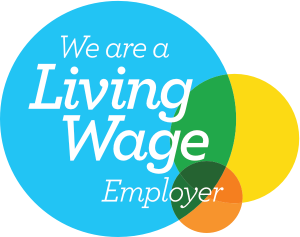Safeguarding staff should be a leadership priority not an afterthought says Rachel Griffin, CEO of the Suzy Lamplugh Trust
I often hear reasons why an organisation hasn’t prioritised the personal safety of staff and volunteers. But while we all know what it’s like to be incredibly busy or short of funding, I can never truly sympathise with these. Suzy’s story, the reason that this charity started, puts any excuse into perspective: nothing is more important than a life.
Suzy Lamplugh was a 25-year old estate agent who went missing at work in 1986. She went to meet a client for a house viewing, leaving only a brief note in her diary of the client’s name, ‘Mr Kipper’. Suzy did not return from her appointment and by the time her manager raised the alarm it had been nearly seven hours since she’d last been seen. Suzy’s body has never been found and she was legally declared dead in 1993.
While many things have changed since 1986 her story remains a poignant reminder that personal safety procedures should be integral to working life. Simple systems, such colleagues acting as one another’s ‘buddy’ when they are out at appointments or making sure diaries are detailed and up-to-date, can help keep staff safe and accounted for. Simple steps save lives.
Everyday tasks, everyday risks
Charities which provide support and services to people will regularly be asking staff and volunteers to work with beneficiaries in a range of circumstances. Your people could be offering support to individuals or families facing multiple disadvantages, undertaking outreach with clients in high-crime areas or carrying out challenging tasks such as delivering bad news. Charity staff and volunteers are increasingly taking on responsibility for functions no-one else is willing to fulfil – and as such their risk can only go up.
The challenge is to ensure that all aspects of our staff and volunteers’ personal safety are identified, and are managed in a constructive and sensible way.
The cost of human life
Many companies, and especially charities, are concerned that personalising and prioritising personal safety will be expensive. But the cost of failing to protect staff is far more costly. Employers must legally provide a safe place to work; failing to manage risks can mean you’re breaking the law and result in significant fines. For example, since the Corporate Manslaughter and Corporate Homicide Act 2007 companies have had to pay millions of pounds in compensation, and these fines have recently increased. In the most recent, a company was fined £1.2m.
For charities, there is an additional angle to consider: reputation. A strong reputation is essential in the not-for-profit sector– when organisations are ordered to pay fines, and when reputations are damaged, it’s likely that an employee has been hurt, or even died. The loss of human life is a sobering prospect, and something that should remind us all to prioritise safety.
Small changes
Personal safety need not be expensive. It’s surprising how small changes can make a significant difference to the safety culture of an organisation. For example, we helped one organisation to improve the safety of their lone workers in just three steps, focusing on three things: perception, proactivity and practice.
- Perception: The organisation asked employees to tell it what risks they faced and what support they needed. This enabled it to create effective risk assessment tools, including incident and ‘near miss’ reporting. Such staff and volunteer participation gets people involved in decision making processes, and ensures new personal safety procedures will actually work in practice.
- Proactivity: the employer used training to ensure there were no gaps in its people’s personal safety understanding and tools. The training and policies it provided were tailored to reflect individual job roles, and attitudes. As a result of these tailored procedures, staff felt more supported and valued, and were better able to complete their day-to-day jobs.
- Practice: the organisation supports employees to ensure policies are actually working and encourages regular staff feedback, recording all incidents and near misses. It uses this information to focus on any issues staff still have, and provide targeted refresher training. By staying up-to-date it’s easier to manage issues and solve problems rapidly, with minimal resources.
Company culture
To be truly effective, personal safety should be embedded into an organisation’s culture. Every member of staff and volunteer should understand what personal safety procedures and policies are in place, and why they must be followed.
This is particularly relevant in the charity sector as workforces tend to be so varied. Charity staff, for example, can include office staff, client-facing staff, part-time workers and volunteers. Each of these staff members face different risks and have different complex needs, but as an employer you have a duty of care to each of them. There is no one-size-fits all model when it comes to personal safety.
One of the most challenging leadership aspects of embedding policy or practice change can be that practising what we preach. Remembering to follow the organisation’s tracing system or to keep to the rules about lone working in the office can be difficult for a busy chief executive but staff and volunteers are more likely to follow procedures that they see used routinely by management.
Encouraging a culture of holding one another to account for checking in after an appointment for example, is an excellent way of demonstrating to your whole team that within any organisation, everyone’s personal safety is important and everyone has a role to play in looking out for themselves and their colleagues.
The Suzy Lamplugh Trust has helped many organisations improve their safeguarding practice. Find out how.


